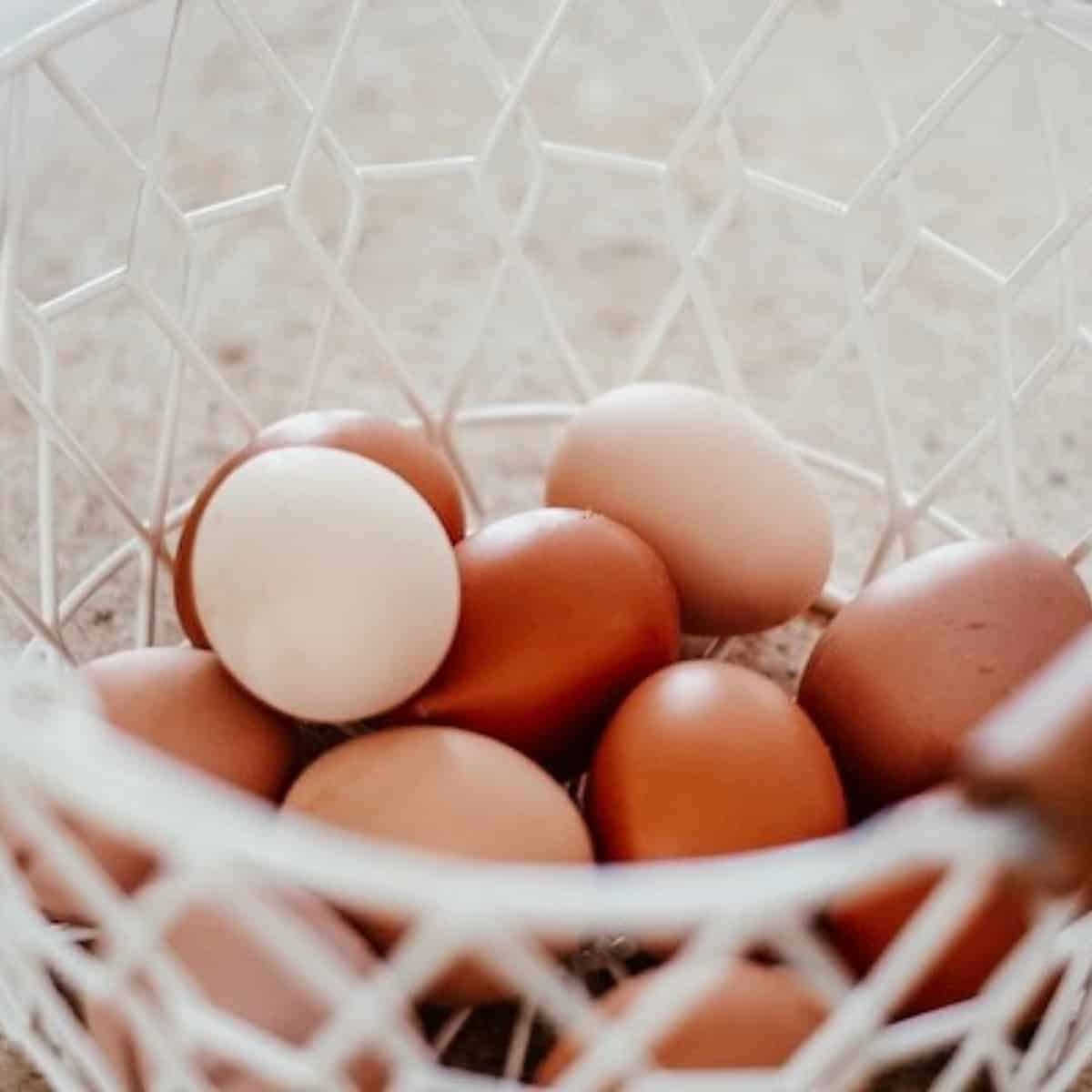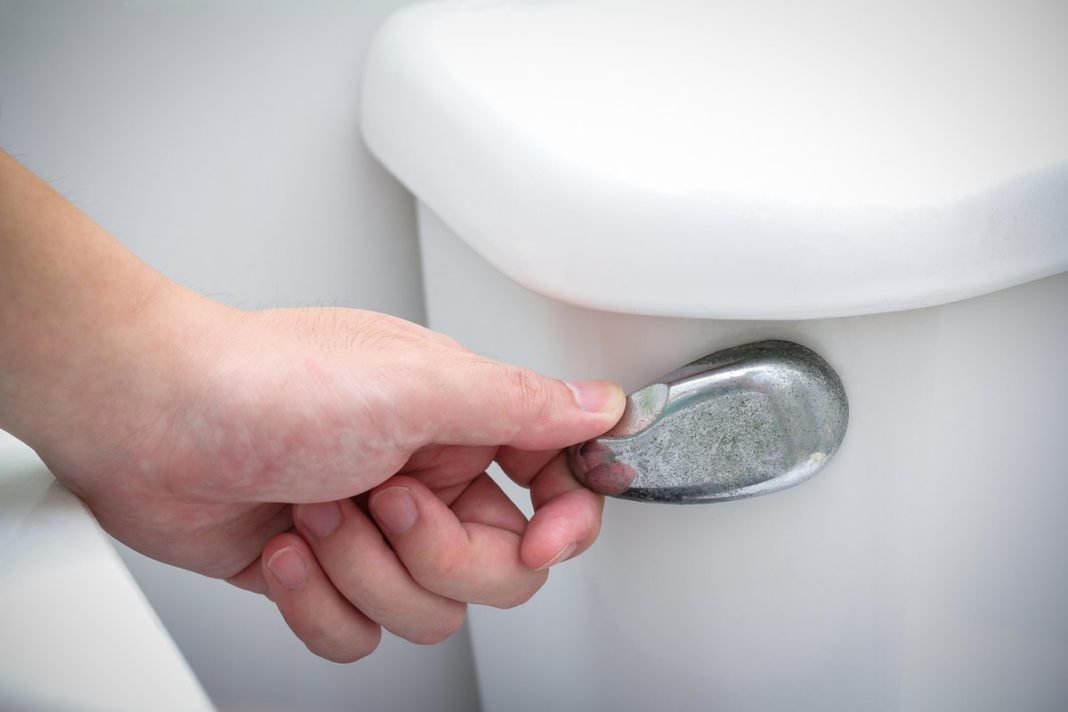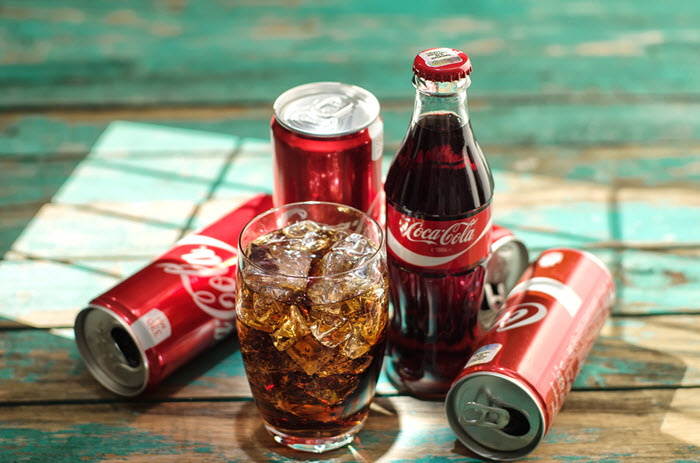
Introduction
When it comes to farm fresh eggs, many people wonder if they need to be refrigerated or not. Some people believe that eggs should be refrigerated right away, while others think that they can be stored at room temperature. In this article, we will explore the answer to this question and the reasons behind it.Why Do We Refrigerate Food?
Before we discuss whether or not farm fresh eggs need to be refrigerated, let's first understand why we refrigerate food. Refrigeration helps slow down the growth of bacteria, which can spoil food and make us sick. When food is kept at temperatures between 40°F and 140°F for too long, it becomes a breeding ground for bacteria.Why Do People Refrigerate Eggs?
Many people refrigerate eggs because they believe that it helps keep them fresh for a longer period of time. They also think that refrigeration helps prevent the growth of harmful bacteria. In fact, in the United States, eggs are washed before they are sold, which removes a protective coating on the shell. This makes them more susceptible to contamination.
Do Farm Fresh Eggs Need To Be Refrigerated?
The answer to this question is no, farm fresh eggs do not need to be refrigerated. In fact, if you buy eggs directly from a farmer, they will likely tell you that you don't need to refrigerate them. This is because farm fresh eggs have a protective coating on the shell that helps prevent contamination.How To Store Farm Fresh Eggs
If you choose to store your farm fresh eggs at room temperature, it's important to keep them in a cool, dry place away from direct sunlight. You can store them in a basket or a carton, but be sure to place them with the pointed end down. This helps keep the yolk centered and prevents it from touching the shell, which can cause contamination.How Long Do Farm Fresh Eggs Last?
Farm fresh eggs can last up to several weeks if they are stored properly. However, it's important to remember that as eggs age, the quality and flavor may begin to deteriorate. To ensure that your eggs are fresh, you can perform a simple test. Place them in a bowl of water – if they sink to the bottom and lay flat, they are fresh. If they float to the top, they are no longer fresh and should be discarded.
Conclusion
In conclusion, you do not have to refrigerate farm fresh eggs. They can be stored at room temperature as long as they are kept in a cool, dry place away from direct sunlight. If you choose to refrigerate them, be sure to store them in their original carton to help prevent contamination. Remember to always perform a freshness test before consuming any eggs to ensure that they are safe to eat.Related video of Do You Have To Refrigerate Farm Fresh Eggs?

Have you ever wondered if you breathe out of both nostrils at the same time? You might have noticed that sometimes one nostril feels more open than the other, but does this mean you're only breathing through one nostril at a time? In this article, we'll explore the science behind nasal breathing and what causes the sensation of having one nostril more open than the other.
The Nasal Cycle

The nasal cycle is a natural phenomenon where the nostrils alternate in their level of airflow. This means that at any given time, one nostril will have more airflow than the other. The cycle typically lasts between 2-6 hours, but can vary from person to person. During the nasal cycle, the tissues inside the nose swell and shrink, which changes the resistance to airflow and alters the sensation of airflow through each nostril.
The Autonomic Nervous System

The autonomic nervous system controls many of our bodily functions, including breathing. It's divided into two parts, the sympathetic nervous system and the parasympathetic nervous system. The sympathetic nervous system is responsible for the "fight or flight" response, while the parasympathetic nervous system is responsible for the "rest and digest" response. The nasal cycle is thought to be regulated by the autonomic nervous system, specifically the sympathetic nervous system.
The Role of Nitric Oxide

Nitric oxide is a gas that's naturally produced in the body and plays a role in many physiological processes. It's also involved in the regulation of the nasal cycle. Nitric oxide is produced in the nasal cavity and diffuses into the air we breathe. It's been shown to have a vasodilatory effect, which means it can widen blood vessels and increase blood flow. This is thought to be one of the mechanisms behind the nasal cycle.
Why One Nostril Feels More Open Than the Other

As mentioned earlier, the nasal cycle causes one nostril to have more airflow than the other at any given time. This can lead to the sensation of one nostril feeling more open than the other. Other factors that can affect the sensation of airflow through each nostril include allergies, sinus infections, and nasal polyps.
The Benefits of Nasal Breathing

Nasal breathing has many benefits over mouth breathing. When we breathe through our nose, the air is filtered, humidified, and warmed before it reaches our lungs. This helps to protect our lungs from harmful particles and pollutants. Nasal breathing also allows for more efficient oxygen uptake, which can improve athletic performance and reduce fatigue.
The Dangers of Mouth Breathing

Mouth breathing can have negative effects on our health. When we breathe through our mouth, we bypass the natural filtration, humidification, and warming that occurs in the nose. This can lead to increased risk of respiratory infections, allergies, and asthma. Mouth breathing can also cause dry mouth, bad breath, and dental problems.
How to Improve Nasal Breathing

If you're having trouble breathing through your nose, there are several things you can do to improve nasal breathing. These include:
- Using saline nasal sprays to moisturize your nasal passages
- Doing nasal breathing exercises to strengthen your nasal muscles
- Avoiding irritants like smoke and pollution
- Treating underlying conditions like allergies and sinus infections
Conclusion
While it may seem like we only breathe out of one nostril at a time, the truth is that the nasal cycle causes alternating airflow through each nostril. This can lead to the sensation of one nostril feeling more open than the other. Nasal breathing has many benefits over mouth breathing, and there are several things you can do to improve nasal breathing if you're having trouble.
Related video of Do You Breathe Out Of Both Nostrils?
Whiskers are the long, noticeable hairs that grow on a cat's face. They are also known as vibrissae and are an essential part of a cat's sensory system. Cats use their whiskers to navigate their surroundings, detect prey, and even communicate with other felines. However, what happens if your cat loses a whisker? Do whiskers grow back?
Do Whiskers Fall Out?

Yes, whiskers can fall out just like any other hair on a cat's body. They may also break off due to injury or other reasons. However, it's important to note that you should never trim or cut your cat's whiskers. Doing so can cause them discomfort and disorient them, leading to potential accidents.
Do Whiskers Grow Back?

The good news is that yes, whiskers do grow back. It may take a few weeks or even months, but eventually, your cat's lost whiskers will begin to grow back. However, it's important to note that the new whiskers may not look exactly like the old ones. They may be thinner, shorter, or a different color.
Why Are Whiskers So Important?

Whiskers are an essential part of a cat's sensory system. They are much more than just hair. Each whisker is filled with sensory receptors that can detect even the slightest changes in the cat's surroundings. They help the cat determine the size and shape of objects, detect movement, and even sense changes in air pressure.
Can You Help Your Cat Grow Back Whiskers?

If your cat has lost whiskers, there is not much you can do to help them grow back faster. However, you can make sure that your cat is getting a healthy diet with all the necessary vitamins and minerals to support hair growth. You can also provide your cat with a stress-free environment, as stress can affect hair growth and health.
Conclusion
Whiskers are a crucial part of a cat's sensory system and should never be cut or trimmed. If your cat loses a whisker, don't worry, it will eventually grow back on its own. Just make sure your cat is getting a healthy diet and living in a stress-free environment to support healthy hair growth.
Related video of Do Whiskers Grow Back?

Turtles are fascinating creatures that have been around for millions of years. They have unique features that make them stand out from other reptiles, such as their hard protective shells and their ability to retract their limbs into their shells. But one question that often arises when it comes to turtles is whether they have tails or not. In this article, we will explore this topic in detail.
What is a Tail?

Before we can answer the question of whether turtles have tails or not, we need to first define what a tail is. A tail is a body part that extends beyond the torso and typically has some sort of function, such as balance or communication. Tails can be found in many different animals, including mammals, birds, and reptiles.
Turtles and Tails

Now that we know what a tail is, we can answer the question of whether turtles have tails or not. The answer is that it depends on how you define a tail. Turtles do have a structure that extends beyond their torso, but it may not be considered a tail in the traditional sense.
The structure that turtles have is called a cloaca. The cloaca is a multi-purpose opening that is used for excretion, reproduction, and laying eggs. It is located at the base of the turtle's body, and while it may resemble a tail, it does not have the same functions as a traditional tail.
The Purpose of a Tail

Since turtles do not have traditional tails, it's worth exploring the functions that tails serve in other animals. Tails can serve many different purposes, such as:
- Balance
- Communication
- Defense
- Propulsion
While turtles may not have tails, they have other adaptations that help them with these functions. For example, their shells provide them with a significant amount of protection, and their limbs are adapted for swimming or moving on land.
Types of Turtles
There are many different types of turtles, and each one has its own unique characteristics. Some turtles have more pronounced cloacas than others, but none of them have traditional tails. Here are some examples of different types of turtles:
- Sea turtles
- Terrapins
- Tortoises
- Box turtles
Turtle Anatomy

While turtles may not have tails, they have many other fascinating anatomical features. Here are some key parts of a turtle's anatomy:
- Shell
- Limbs
- Neck
- Head
- Eyes
- Mouth
Each of these parts of the turtle's anatomy plays an important role in the animal's survival and well-being.
Turtle Behavior

Another interesting aspect of turtles is their behavior. Turtles are generally slow-moving animals that spend a lot of time basking in the sun or resting in the water. They are also known for their ability to retreat into their shells when they feel threatened.
Turtles have a variety of different behaviors depending on their species and habitat. For example, sea turtles migrate long distances between their feeding and nesting grounds, while box turtles are known for their ability to climb trees.
Turtle Conservation

Turtles are an important part of many different ecosystems, but they are also facing a number of threats. Habitat loss, pollution, and over-harvesting for the pet trade are just a few of the challenges that turtles are currently facing.
Conservation efforts are underway to help protect turtles and their habitats. These efforts include habitat restoration, captive breeding programs, and public education campaigns.
Conclusion
So, do turtles have tails? The answer is no, but they do have a structure called a cloaca that may resemble a tail. While turtles may not have traditional tails, they have many other fascinating adaptations that help them survive and thrive in their environments. By learning more about these amazing creatures, we can better appreciate the important role they play in the natural world.
Related video of Do Turtles Have Tails?

One of the most popular myths about Australia is that toilets flush in the opposite direction in the Southern Hemisphere. But is it true? In this article, we will explore the science behind the myth and find out the truth.
The Coriolis Effect

The myth about toilet flush direction is based on the Coriolis effect, which is a natural phenomenon that affects the rotation of the Earth. The Coriolis effect causes objects moving in a straight line to appear to curve to the right in the Northern Hemisphere and to the left in the Southern Hemisphere.
However, the Coriolis effect is only noticeable in large-scale phenomena, such as hurricanes or ocean currents. In small-scale phenomena, such as toilet flushes, the Coriolis effect is too weak to have any significant effect.
The Truth About Toilet Flush Direction

The direction in which a toilet flushes is determined by the shape of the bowl and the angle of the water jets, not by the Coriolis effect. In fact, if you take two identical toilets and place them side by side, one in the Northern Hemisphere and one in the Southern Hemisphere, they will flush in the same direction.
So, the answer to the question "do toilets flush the opposite way in Australia?" is no. The direction of a toilet flush is determined by the toilet's design, not by the hemisphere in which it is located.
Why the Myth Persists

Despite the fact that the myth about toilet flush direction has been debunked, it still persists. This is because it is a fun and interesting factoid that has been perpetuated by popular culture.
The myth was popularized by an episode of The Simpsons, in which the family travels to Australia and discovers that toilets flush in the opposite direction. Since then, the myth has been repeated in countless TV shows, movies, and travel guides.
In Conclusion
So, there you have it. The myth about toilets flushing in the opposite direction in Australia is just that - a myth. The direction of a toilet flush is determined by the toilet's design, not by the hemisphere in which it is located. While it may be a fun factoid, it is not based in science.
Related video of Do Toilets Flush The Opposite Way In Australia?

When you think of pencils, you may immediately think of lead. However, the reality is that pencils have not been made with lead for many years. In fact, pencils are made with a different material called graphite. So, if you're wondering if they still use lead in pencils, the answer is no.
The History of Lead in Pencils

It's important to note that pencils were never actually made with lead. Instead, the material used to write with was a type of graphite that was mistakenly thought to be a form of lead. This misconception led to the name "lead pencil".
The use of graphite for writing dates back to the 16th century, when it was first discovered in England. Graphite was initially used as a marking tool for sheep, but soon after its discovery, it was used as a writing tool.
Early pencils were made by inserting graphite into hollowed-out sticks of wood. These early pencils were crude and often broke easily. However, improvements were made over time, and by the 19th century, the modern pencil had been developed.
The Difference Between Lead and Graphite

Lead and graphite are two very different materials. Lead is a heavy metal that is toxic to humans, while graphite is a soft, black mineral that is non-toxic.
Graphite is an excellent material for writing with because it leaves a dark, smooth mark on paper. It is also very durable and does not smudge or smear easily.
The Benefits of Graphite
Graphite pencils have several benefits over other types of writing instruments. One of the main benefits is that they are erasable. This makes them ideal for students and anyone else who needs to make changes to their work.
Another benefit of graphite pencils is that they are relatively inexpensive. They are also widely available and come in a variety of grades, from very hard to very soft. This makes them suitable for a wide range of writing tasks.
The Environmental Impact of Pencils

One of the benefits of using pencils is that they are environmentally friendly. Pencils are made from renewable resources, such as wood and graphite. They are also biodegradable, which means they will eventually decompose and return to the earth.
In addition, many pencil manufacturers use sustainable practices to produce their products. They may use recycled materials, plant trees to replace those that are harvested for pencil production, and use energy-efficient manufacturing processes.
Conclusion
In conclusion, pencils are no longer made with lead. Instead, they are made with a material called graphite, which is non-toxic and environmentally friendly. Graphite pencils have several benefits over other types of writing instruments, including their erasability, affordability, and availability in a range of grades. So, the next time you pick up a pencil, you can feel confident that it does not contain lead.
Related video of Do They Still Use Lead In Pencils?

Introduction
When a person decides to get a tattoo, they often wonder if it will last forever. After all, the idea of having a permanent design etched into their skin is both exciting and intimidating. But the question remains - do tattoos fade away over time?

The Tattoo Process
Before delving into the topic of tattoo fading, it's important to understand the tattoo process. A tattoo is created by injecting ink into the dermis layer of the skin using a needle. This causes the ink to be permanent, as it is deep enough to avoid being shed with the outer layers of skin. The ink particles are too large for the body's immune system to remove, which is why tattoos are considered permanent.
Tattoo Fading Process
Despite their reputation for permanence, tattoos do fade over time. This is due to several factors. Firstly, exposure to the sun can cause the ink to fade faster. UV rays break down the ink particles, causing them to become less vibrant. Additionally, as the body ages, the skin loses elasticity and collagen, which can cause tattoos to appear less sharp and defined.

Tattoo Maintenance
While it's impossible to prevent tattoos from fading, there are ways to slow down the process. One of the most effective methods is to avoid exposing the tattoo to the sun. Covering it with clothing or using sunscreen can help protect the ink from UV rays. Additionally, keeping the skin moisturized can help preserve the tattoo's appearance.
Tattoo Removal
For those who are unhappy with their tattoos, or for those whose tattoos have faded beyond recognition, tattoo removal is an option. However, it's important to note that tattoo removal is a lengthy and painful process. It involves using lasers to break down the ink particles so that they can be absorbed by the body's immune system. The process can take several sessions and can be quite costly.

Conclusion
So, do tattoos fade away? The answer is yes, they do. However, the extent to which they fade depends on several factors, including exposure to the sun and the body's natural aging process. While it's impossible to prevent tattoos from fading, there are ways to slow down the process and preserve their appearance. And for those who are unhappy with their tattoos, tattoo removal is an option - albeit a painful and costly one.
Related video of Do Tattoos Fade Away?

Soft drinks are one of the most popular beverages consumed worldwide. People of all ages love to drink them because of their sweet taste and refreshing feeling. But have you ever wondered if soft drinks contain alcohol? In this article, we will discuss whether soft drinks contain alcohol or not.
What are Soft Drinks?

Soft drinks, also known as carbonated drinks or soda, are non-alcoholic beverages that are made by dissolving carbon dioxide in water. They are flavored with different ingredients like fruit juices, syrups, and extracts to make them taste sweet and refreshing. Soft drinks are available in a variety of flavors and brands worldwide.
Alcohol in Soft Drinks

Soft drinks do not contain alcohol in their original form. They are made of water, sugar, and other ingredients that do not contain alcohol. However, some soft drinks may contain a small amount of alcohol due to various reasons, including:
- The manufacturing process
- Contamination during production
- Adulteration by unscrupulous dealers
- Use of alcohol-containing flavorings
It is important to note that the amount of alcohol in soft drinks is usually low and does not have a significant effect on the body. However, people who want to avoid alcohol completely should be careful when consuming soft drinks.
Types of Soft Drinks that Contain Alcohol
Some soft drinks contain alcohol intentionally, such as:
- Alcopops: These are soft drinks that contain alcohol, usually around 5% alcohol by volume (ABV). They are sweetened with fruit flavors and are popular among young people.
- Beer: Beer is an alcoholic beverage made from malted barley, hops, water, and yeast. It contains around 4-6% ABV and is a popular beverage worldwide.
Non-Alcoholic Soft Drinks

Most soft drinks are non-alcoholic and do not contain any alcohol. Non-alcoholic soft drinks are safe to consume for people of all ages, and they are a great alternative to alcoholic beverages. Some popular non-alcoholic soft drinks include:
- Coca-Cola
- Pepsi
- Sprite
- Fanta
- Mountain Dew
Conclusion

In conclusion, most soft drinks do not contain alcohol. However, some soft drinks may contain a small amount of alcohol due to various reasons. People who want to avoid alcohol completely should be careful when consuming soft drinks. Non-alcoholic soft drinks are a safe and refreshing alternative to alcoholic beverages.
Related video of Do Soft Drinks Contain Alcohol?

Introduction
Sharks have long been a subject of fascination and fear for humans. Movies like Jaws have made people believe that sharks are man-eating creatures that actively seek out human prey. One of the most common myths about sharks is that they are attracted to human blood. But is there any truth to this?
Sharks and Blood

Sharks are attracted to blood, but not in the way that most people think. Sharks have an incredible sense of smell, and they can smell blood from miles away. However, they are not specifically attracted to human blood. Sharks are attracted to any blood, whether it comes from a fish, a seal, or a human.
The Truth About Shark Attacks

Shark attacks on humans are rare, and they are usually a case of mistaken identity. Sharks don't see humans as prey, and they don't actively seek out human blood. Most shark attacks on humans happen when a shark mistakes a person for a seal or other prey. In these cases, the shark will take a bite and then realize its mistake and swim away.
Why Sharks Attack

Sharks usually attack when they feel threatened or when they are hungry. If a shark is hungry and there is no other food available, it may attack a human. However, this is extremely rare. Most sharks will swim away if they feel threatened or if they are not interested in the person.
How to Avoid Shark Attacks

The best way to avoid a shark attack is to stay out of the water. If you do go in the water, stay close to shore and avoid swimming in areas where sharks are known to be present. If you see a shark, stay calm and don't panic. Slowly swim back to shore while keeping an eye on the shark.
Conclusion
In conclusion, sharks are attracted to blood, but not specifically human blood. Shark attacks on humans are rare, and they usually happen when a shark mistakes a person for prey. The best way to avoid a shark attack is to stay out of the water or swim in areas where sharks are not present. So, the next time you go to the beach, don't be afraid of the sharks. Just be aware of your surroundings and enjoy the ocean!
Related video of Do Sharks Like Human Blood

Have you ever wondered if racehorses pee a lot? It's a common question among horse racing enthusiasts, and the answer may surprise you.
Why Do Racehorses Pee So Much?

Racehorses are known to produce a large amount of urine, and there is a reason for this. Horses are herbivores, which means they consume a lot of fiber in their diet. The fiber is broken down in the horse's digestive system, and the waste products are excreted as urine.
Because racehorses are fed a high-fiber diet, they produce more urine than other horses. In addition, racehorses are often given diuretics, which increase urine production and help to prevent dehydration.
How Much Do Racehorses Pee?

The amount of urine a racehorse produces can vary, but on average, a horse will produce between 2 and 4 liters of urine per day. However, during a race, a horse may produce up to 10 liters of urine due to the stress and excitement of the event.
It is important for racehorses to be well hydrated before a race, as this can help to prevent dehydration and heat stress. The large amount of urine produced by racehorses is a natural process that helps to regulate their body temperature and maintain their overall health.
What Happens to Racehorse Urine?

Racehorse urine is typically collected and disposed of in a responsible manner. In some cases, the urine may be used for research purposes, such as studying the horse's diet and metabolism.
In addition, the urine may be tested for drugs or other substances that could enhance the horse's performance. This is an important part of maintaining the integrity of horse racing and ensuring that all horses are competing on a level playing field.
Conclusion
So, do racehorses pee a lot? Yes, they do. The large amount of urine produced by racehorses is a natural process that helps to regulate their body temperature and maintain their overall health. It is also an important part of maintaining the integrity of horse racing.
As horse racing enthusiasts, we should appreciate the hard work and dedication that goes into training and caring for these magnificent animals. By understanding the natural processes that govern their bodies, we can gain a greater appreciation for the sport and the animals that make it possible.